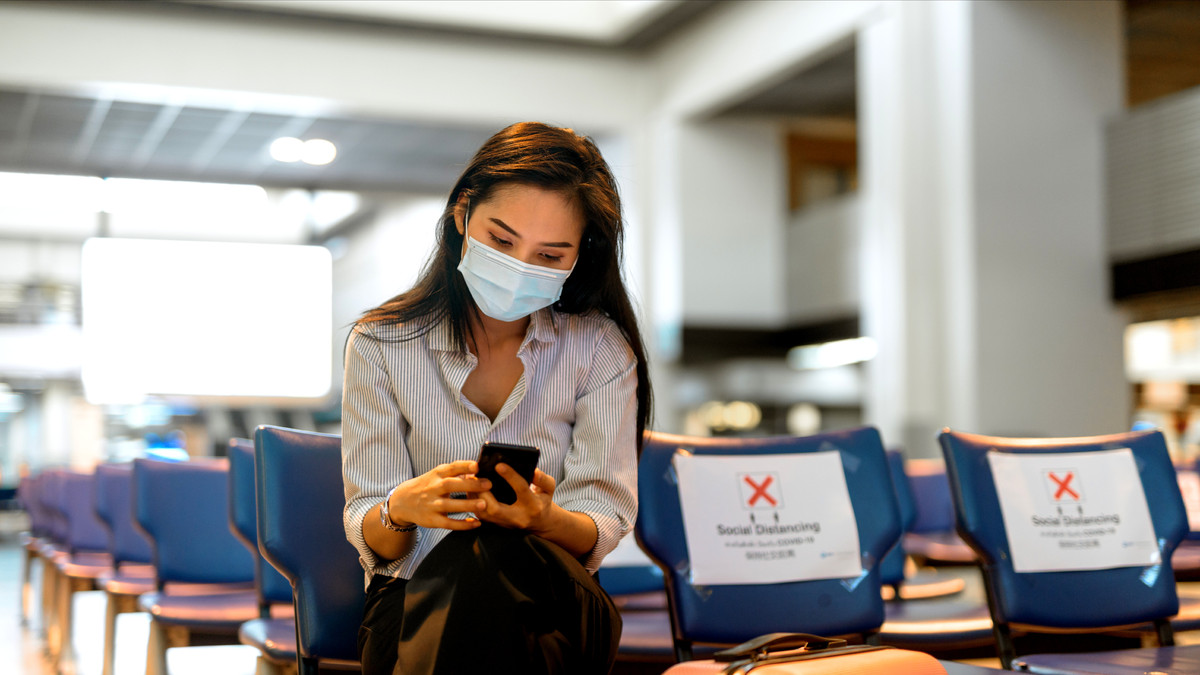When the Covid-19 crisis gripped the airline industry in March, it became clear to United Airlines that the touchpoints — the literal touchpoints — travelers experience during an airport journey were suddenly problematic.
United reacted quickly, using in-house staff to develop a software upgrade to allow touchless baggage check at its check-in kiosks. By May 10, the solution, which enables travelers to print bag tags by scanning a mobile or printed boarding pass in a slot just below the kiosk screen, was being tested at four airports. A month later, United enabled the touchless solution at all 219 domestic airports where it owns kiosks.
We knew we needed to act fast and to deliver on some of these things that will be more appealing to people in this new world, said Maria Walter, the United’s managing director of insights and innovation.
United has led the way on touchless bag drop among U.S. airlines, but its efforts are just one example of how airports and airlines across the globe are turning their attention toward a ramp-up in touchless deployment as they seek to make the airport experience safer and more efficient during this time of pandemic.
“The capability has been there for a while, but I guess before it was quite difficult to justify the expense when you have relatively new kiosks,” said Ryan Ghee, head of strategy and development for Future Travel Experience, a U.K.-based event organizer and online media site that focuses on travel technology. “All of the sudden, there’s a use case for this, so that’s why we are suddenly seeing lots of airports and airlines embracing it.”
As Ghee pointed out, touchless deployments, including biometrics, are hardly new. For years, airports and airlines have moved slowly ahead with technologies ranging from mobile passport control to facial recognition at departure gates and biometric airport lounge entry.
At U.S. airports, Customs and Border Protection has set a target of using facial recognition-powered biometrics to confirm the identities of 97% of departing international travelers by 2023, part of a congressional mandate related to the tracking of visa overstays.
Ghee said he now expects the pace of biometric deployment at airports around the world to accelerate rapidly.
“I think we are probably looking at the next one to three years where biometrics will become really popular in major airports,” he said. “I had thought it would be five to 10 years.”
Clear, which offers biometric security screening kiosks at 34 U.S. airports, said that it has tweaked its software in response to Covid-19. Clears kiosks enable users to confirm their identities via iris scan or via fingerprint check. “Before the pandemic,” said CEO Caryn Seidman-Becker, “the kiosks were set so that fingerprint check was the primary option, and that was the selection made by 80% of users. Now, Clear has set the touchless iris scan as its primary option, and it’s being chosen by 70% of users.”
The company has also retrofitted its kiosks with thermal scanners in case temperature checks become a requirement.
Seidman-Becker said Clear has seen a massive pickup in interest from airports for a variety of touchless solutions it offers, including biometric payment at concessions.
“I think we used to be a solution looking for a problem,” she said. “Now there’s a problem looking for touchless as a solution.”
Other airport technology providers are also responding. SITA, for example, plans soon to roll out a solution that will allow for more rapid deployment by airlines of proprietary APIs on common-use airport kiosks, which are kiosks shared by multiple airlines. Facilitated by the SITA technology, airlines can introduce touchless options such as baggage check and payment on those common-use kiosks.
Airports are also eager to get into the act. In early June, Denver Airport announced a strategic partnership with Virginia-based biometrics developer Daon to create contactless solutions throughout the airport journey. One potential pilot project would enable mobile-powered touchless retail payment. Another under consideration is a self-service reservation system that would enable enrolled passengers to enjoy reduced physical contact at the airport during a designated time window. The first pilot program is expected to begin by the end of the summer.
Other airports have made more specific announcements. Houston Bush Intercontinental Airport, for example, announced on June 15 that it had deployed facial-recognition technology at two departure gates. The technology recognizes people even if they are wearing a facial covering, the airport said. The equipment is slated to be at 15 gates by October.
No airport, however, has unveiled a more extensive touchless program than Bangalore, the third-largest in India. The program, which first went live with Indian carrier Vistara, enables passengers to go touchless from parking garage to gate. It will be rolled out with all domestic Indian carriers by October, said Satyaki Raghunath, the airports chief research and development officer, in a recent Future Travel Experience webinar.
Bangalore verifies a traveler’s identify using facial biometrics. Facial recognition technology then gets the passenger through check-in, bag check, security screening and onto the plane.
Raghunath said that Bangalore had been undertaking a touchless travel trial before the pandemic but accelerated the project because of Covid-19.
“What started off as a customer experience initiative has now with Covid, in the current scenario, turned out to be a godsend,” he said.
This article was from Transportation Monitor Worldwide and was legally licensed through the NewsCred publisher network. Please direct all licensing questions to legal@newscred.com.
